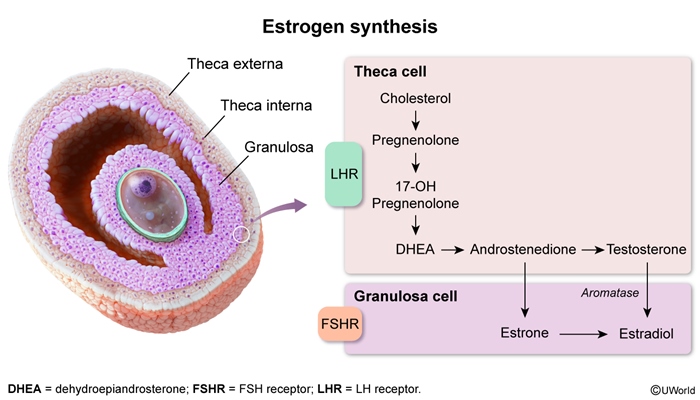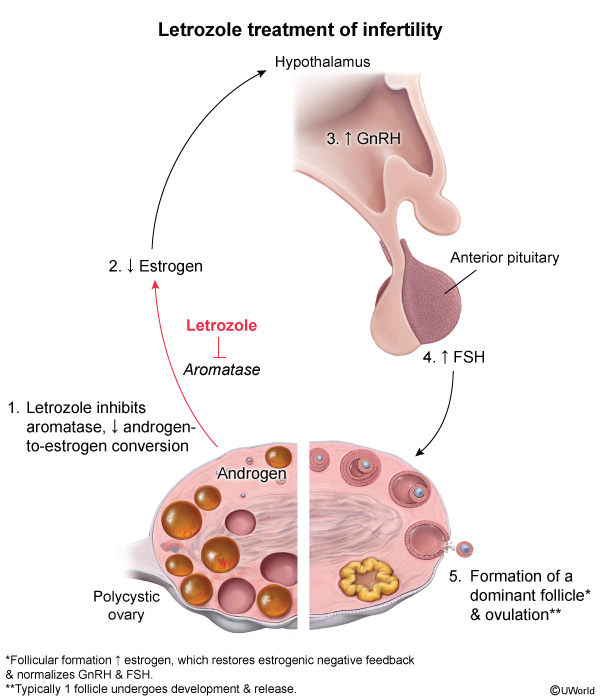Aromatase Inhibitors
Article Sections
Introduction
Aromatase inhibitors are a class of drugs that inhibit the enzyme aromatase, which is responsible for the peripheral conversion of androgens to estrogens. By suppressing estrogen synthesis, aromatase inhibitors reduce circulating estrogen levels and are used primarily in the treatment of hormone receptor–positive breast cancer in postmenopausal women. There are 2 classes: nonsteroidal (reversible) and steroidal (irreversible).
Estrogen synthesis
Estrogens are synthesized primarily by the aromatization of androgens. Androgens are synthesized from cholesterol in the theca interna cells of the ovary under the influence of LH. Androgens released from theca interna cells migrate into the nearby granulosa cells, where the aromatase enzyme converts the androstenedione into estradiol (Figure 1). This reaction is stimulated by FSH, which regulates estrogen levels during the menstrual cycle. Aromatase is also expressed in smaller amounts in the adrenal cortex, adipose tissue, and breast.
Continue Learning with UWorld
Get the full Aromatase Inhibitors article plus rich visuals, real-world cases, and in-depth insights from medical experts, all available through the UWorld Medical Library.
Figures

